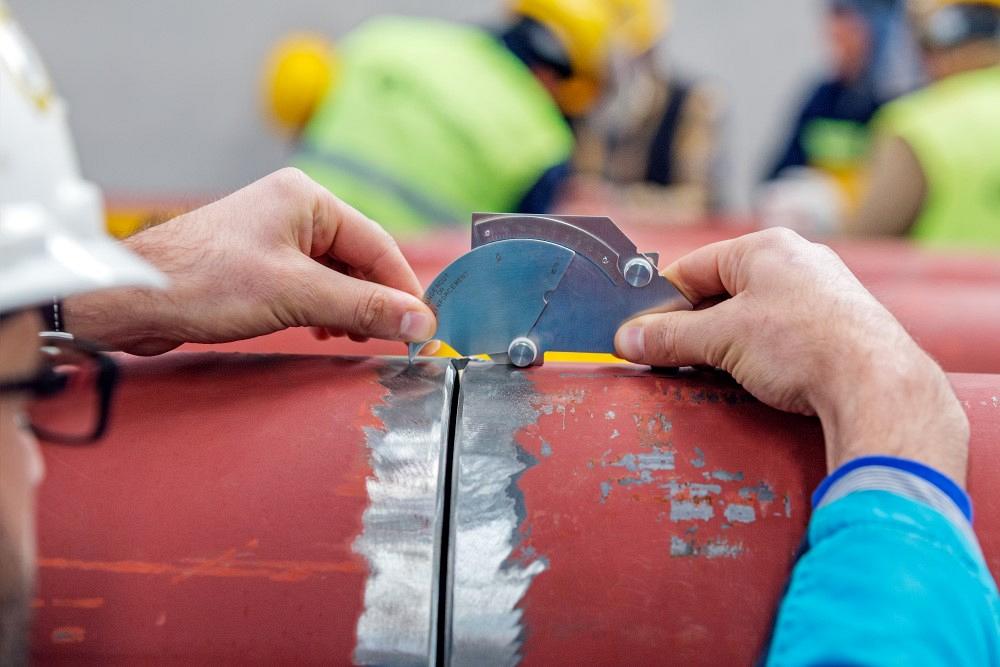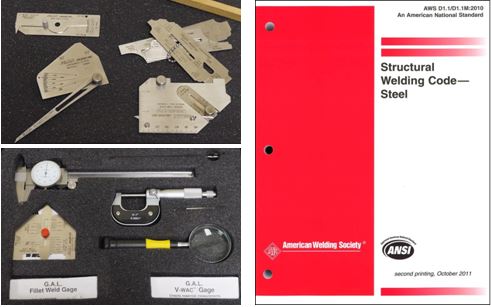Why Pick Professional Welding Inspection Gilbert Arizona for Your Projects?
Why Pick Professional Welding Inspection Gilbert Arizona for Your Projects?
Blog Article
Exploring the Relevance of Welding Evaluation in Industrial Applications: Guarding Against Failures and Enhancing Durability
Welding inspection serves as a critical line of defense in commercial applications, guaranteeing the architectural integrity and dependability of welded elements. By systematically determining flaws such as porosity and incomplete fusion, assessments not only protect against failings yet also expand the life-span of essential properties.
Role of Welding Assessment
Welding evaluation acts as a vital protect in industrial applications, guaranteeing that bonded frameworks fulfill defined criteria of top quality and security. This procedure entails a systematic examination of welds to verify their honesty, toughness, and compliance with established codes and requirements. The function of welding assessment is complex, encompassing both visual analyses and non-destructive testing approaches, which might include ultrasonic, radiographic, or magnetic particle screening.

In addition, welding assessment plays a vital role in governing conformity. Ultimately, the role of welding evaluation is indispensable in advertising safety and security, enhancing efficiency, and safeguarding financial investments in industrial infrastructure.
Typical Welding Problems

Among one of the most prevalent defects is porosity, defined by little gas pockets caught within the weld steel. This takes place because of contaminants or improper protecting gas, compromising the weld's toughness. One more substantial defect is incomplete fusion, where the weld steel falls short to bond correctly with the base material, possibly bring about architectural weaknesses.
Cracks can also establish throughout or after the welding process, frequently credited to thermal tensions or incorrect air conditioning prices. Additionally, undercutting, where the base metal is deteriorated along the weld bead, can deteriorate the joint and is often triggered by too much warmth input or incorrect technique.
Furthermore, lack of infiltration takes place when the weld steel does not reach the root of the joint, bring about inadequate strength. Comprehending these common defects is critical for welders and inspectors alike to make sure that bonded frameworks fulfill safety and performance standards, inevitably protecting against prospective failings in industrial applications.
Benefits of Normal Inspections
Routine evaluations serve as an important protect in making sure the dependability and durability of bonded frameworks. These assessments determine prospective issues and weaknesses that might endanger the honesty of welds, permitting prompt removal prior to issues rise. By implementing an organized examination regimen, organizations can significantly reduce the danger of devastating failures that may lead to expensive downtime, equipment replacement, or perhaps crashes.
Moreover, normal evaluations contribute to boosted high quality control throughout the welding process. By adhering to a consistent evaluation routine, companies can make certain that their welding practices meet established quality standards and ideal practices. This not only cultivates a society of accountability yet additionally encourages constant enhancement amongst welding workers.
On top of that, normal inspections facilitate better upkeep preparation. By determining deterioration early, organizations can purposefully schedule substitutes and repairs, decreasing disturbance to procedures. This proactive technique eventually brings about extended property life expectancy and improved overall productivity.
Finally, a commitment to normal assessments can enhance a firm's online reputation in the sector. Customers and stakeholders increasingly value companies that prioritize safety and quality, therefore improving count on and potentially causing enhanced service opportunities.
Industry Criteria and Laws
Adhering to sector standards and guidelines is a fundamental aspect of welding assessment that complements the advantages of regular examinations. These criteria, established by companies such as the American Welding Society (AWS) and the American Culture of Mechanical Designers (ASME), supply a structure for best practices in welding procedures, materials, and assessment techniques. Compliance with these guidelines ensures that welds meet the called for high quality and safety and security standards, dramatically decreasing the danger of architectural failures.
Regulative bodies like the Occupational Safety and Health And Wellness Administration (OSHA) additionally impose standards that secure employees and the setting throughout welding procedures. By following these developed requirements, sectors can enhance the integrity of their components and frameworks, guaranteeing they execute as intended under various functional conditions.
Furthermore, adherence to sector standards fosters consistency in high quality control, helping with smoother interaction among stakeholders and regulatory companies. This alignment not just lessens obligation risks but read review additionally boosts the credibility of organizations in open markets. Eventually, conformity with welding criteria and guidelines is not just a legal commitment; it is an important financial investment in safety, efficiency, and long-lasting operational success.
Future Trends in Welding Assessment
As industries proceed to advance, the future of welding examination is positioned to integrate advanced innovations that improve accuracy and efficiency. Among the most considerable patterns is the fostering of automation and robotics in evaluation processes. Automated systems can conduct examinations rapidly, decreasing human error and increasing throughput in making settings.
In addition, the integration of fabricated intelligence (AI) and maker discovering algorithms will certainly make it possible for predictive analytics, permitting real-time evaluations and proactive maintenance (Welding Inspection Gilbert Arizona). By assessing data from previous assessments, these innovations can recognize patterns that could show potential failings, thus extending the life-span of bonded elements

Moreover, the pattern towards digitalization will certainly result in boosted information management systems that help with much better monitoring, reporting, and conformity with market criteria. In summary, the future of welding examination is defined by technological innovations that promise to considerably boost dependability, security, and operational effectiveness in different industrial applications.
Conclusion
In conclusion, welding assessment serves a vital function in making certain the stability and durability of bonded frameworks throughout different commercial applications. As advancements in modern technology continue to advance, the future of welding examination guarantees enhanced accuracy and performance, ultimately adding to the longevity of essential frameworks.
Welding examination offers as an essential line of defense in industrial applications, ensuring the structural honesty and reliability of bonded parts.Welding assessment serves as an essential safeguard in industrial applications, guaranteeing that welded structures satisfy specified criteria of top quality and security - additional reading Welding Inspection Gilbert Arizona. Inevitably, the role of welding assessment is important in advertising safety and security, improving efficiency, and safeguarding investments in commercial infrastructure
These standards, developed by companies such as the American Welding Culture (AWS) and the American Society of Mechanical Engineers (ASME), offer a structure for best methods in welding procedures, materials, and assessment techniques.In final thought, welding evaluation serves an important feature in ensuring the integrity and toughness of bonded structures throughout different industrial applications.
Report this page